Koh Samui, famed for its pristine beaches and lush tropical landscapes, is more than just a picturesque escape—it’s a vibrant hub of festivals and cultural events that bring the island’s rich traditions to life. From the spiritual serenity of traditional Buddhist celebrations to the electric energy of beach parties, Koh Samui offers a unique tapestry of experiences that invite both residents and visitors to connect more deeply with Thai culture.
These festivals are a reflection of the island’s soul, offering insight into the local way of life and creating a sense of community. Whether you’re a long-term resident or planning a visit, attending these cultural events is one of the best ways to immerse yourself in the traditions that define Koh Samui. Each celebration, whether ancient or modern, holds something special, providing an opportunity to participate in the island’s unique cultural fabric.
In this article, we’ll explore the major festivals and events that take place throughout the year in Koh Samui, highlighting their significance and giving you the chance to experience these remarkable celebrations firsthand.
The Importance of Festivals in Koh Samui’s Cultural Landscape
Festivals are the heartbeat of Koh Samui’s social and cultural life, weaving together the island’s spiritual, communal, and historical identity. They serve as a bridge between the past and present, offering a unique window into Thai culture. For both locals and visitors, these events are an opportunity to connect, share, and celebrate. Many of these festivals are deeply rooted in religious significance, often tied to Buddhist beliefs, while others mark important national holidays or seasonal transitions that resonate with the rhythms of island life.
What makes Koh Samui’s festivals so remarkable is their ability to blend joyful celebrations with spiritual depth. Whether it’s the playful water battles of Songkran, symbolizing a fresh start for the Thai New Year, or the serene beauty of Loy Krathong, where participants release floating lanterns to pay homage to the water goddess, each event invites participants to take part in time-honored traditions. These festivals reflect the island’s communal spirit, where both locals and visitors come together to celebrate the shared values of respect, gratitude, and renewal.
Participating in these cultural events allows you to experience Koh Samui’s vibrant culture firsthand. The festivals are not just about entertainment but are deeply tied to the island’s identity and heritage. Whether you are watching a colorful procession, making merit at a temple, or releasing a lantern into the night sky, these events provide a rare glimpse into the customs that have shaped life on the island for generations.
A Calendar of Festivals and Cultural Events in Koh Samui
Koh Samui is home to a diverse range of festivals and cultural events throughout the year, each offering a unique glimpse into the island’s traditions and vibrant community. Whether you’re drawn to spiritual ceremonies or lively parties, there’s always something exciting happening on this tropical island.
Let’s explore some of the most popular festivals and events celebrated on Koh Samui.
Songkran (Thai New Year) – April
Songkran, celebrated in mid-April, marks the start of the Thai New Year and is one of the most famous festivals in Thailand. What begins as a traditional religious festival, with the gentle sprinkling of water to wash away sins and bring good luck for the year ahead, has evolved into an exhilarating water fight across the country.

In Koh Samui, the streets of Chaweng and Lamai come alive as locals and tourists engage in joyous water battles, turning the island into a massive celebration. Beyond the fun, locals participate in religious ceremonies at temples, where they make merit and offer prayers for prosperity and health. Songkran in Koh Samui is a must-experience event, combining traditional spiritual rituals with modern revelry.
Loy Krathong – November
Loy Krathong is one of Thailand’s most visually stunning festivals, celebrated in November under the light of the full moon. Participants release beautifully decorated floats, or krathongs, onto lakes, rivers, and seas to honor the water spirits and ask for forgiveness for any harm caused to the environment. The festival also symbolizes letting go of past grievances and starting anew.
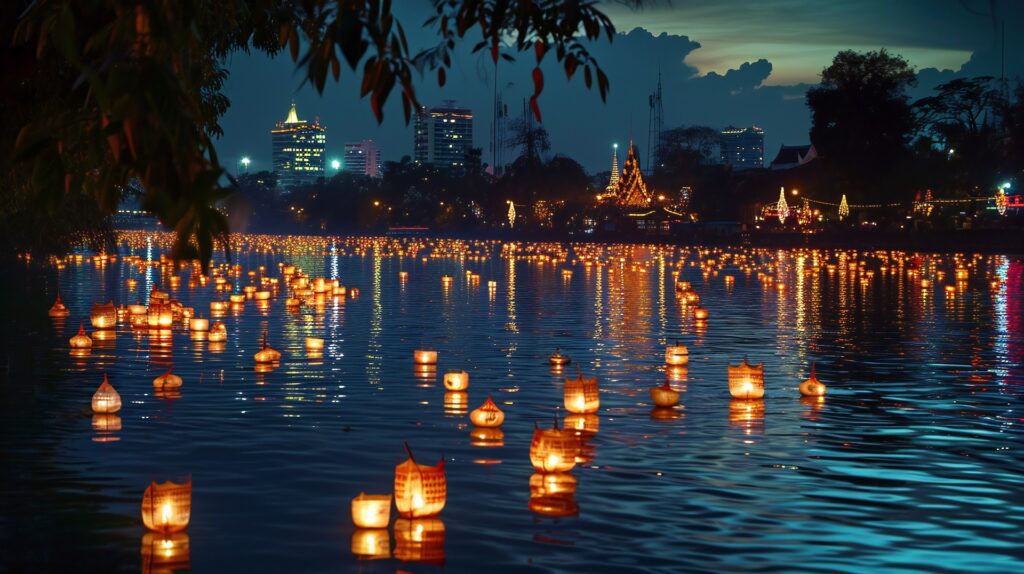
In Koh Samui, popular locations such as Chaweng Lake and Bophut Beach glow with hundreds of floating krathongs, creating a magical atmosphere. The festival includes music, dancing, and traditional performances, making it both a spiritual and cultural highlight for the island. For many, Loy Krathong is a deeply reflective experience, and watching the illuminated floats drift away is a moment of peace and gratitude.
Full Moon Parties – Year-Round
Though not a traditional Thai festival, the Full Moon Parties held on nearby Koh Phangan have become iconic events for many visitors to Koh Samui. These all-night beach parties attract thousands of partygoers every month to celebrate under the light of the full moon, with music, dancing, and fire shows setting the tone.
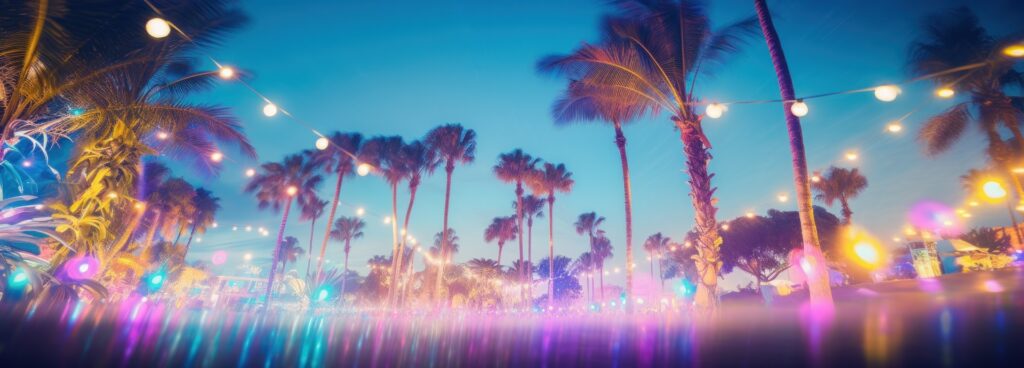
Many visitors to Koh Samui take a short boat ride to Koh Phangan to participate in the world-famous Full Moon Parties, though there are often smaller celebrations on Koh Samui itself, especially in Chaweng. These parties are a vibrant part of the island’s modern culture, mixing international influences with local flavors, offering visitors an unforgettable nightlife experience.
Chinese New Year – January/February
With a large Chinese-Thai community, Chinese New Year is another significant celebration on Koh Samui. Taking place between January and February, depending on the lunar calendar, this festival is filled with bright colors, traditional lion and dragon dances, and fireworks lighting up the sky.
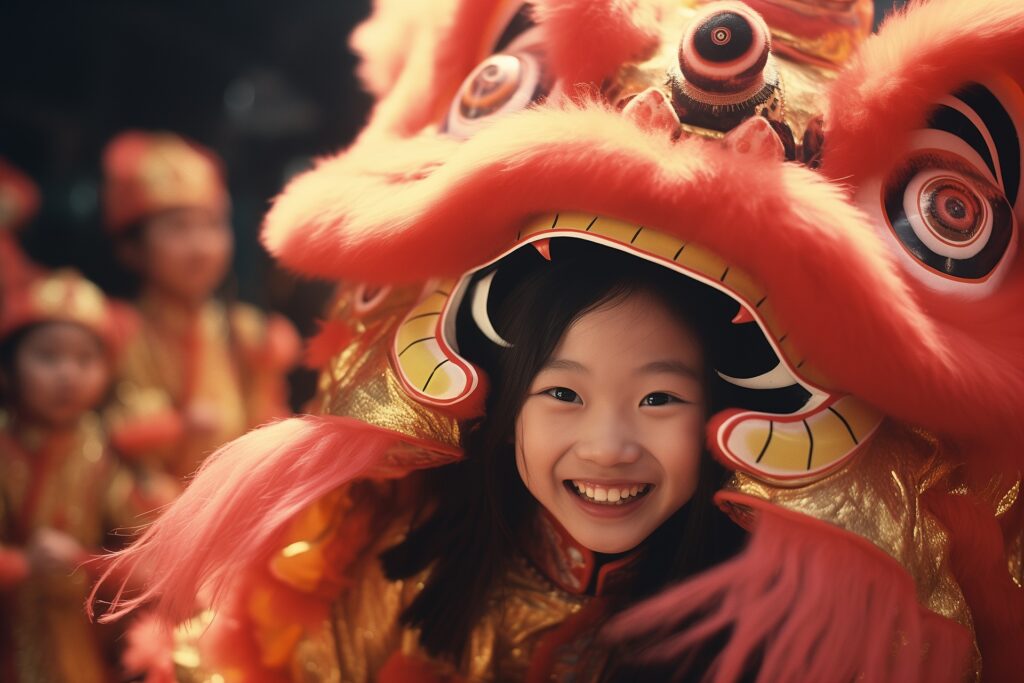
Temples around the island, particularly in Nathon and Maenam, become the focal points of celebrations as families gather to make offerings and pay respects to their ancestors. The streets are filled with lively parades and performances, creating a festive atmosphere that draws both locals and tourists. The Chinese New Year is a time of feasting, family, and good fortune, with businesses and homes blessed by the traditional lion dance, believed to bring prosperity for the year ahead.
Samui Regatta – May
For those with an interest in sports and a love for the sea, the Samui Regatta is one of the island’s premier events. Held annually in May, this international sailing competition brings together sailors from around the world to race in the clear waters off Chaweng Beach. The Samui Regatta isn’t just about the races, though—it’s also a week filled with beach parties, social events, and award ceremonies.
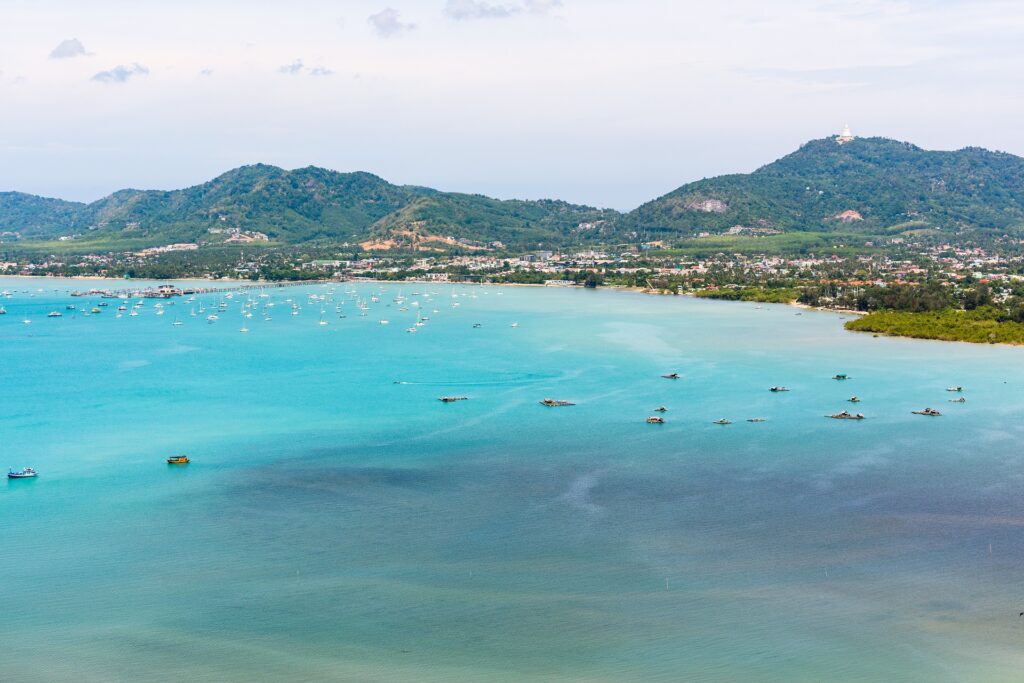
The event showcases Koh Samui’s stunning coastline, with colorful yachts dotting the horizon as they race across the water. It’s a fantastic opportunity to experience the island’s nautical heritage while enjoying the social buzz that accompanies this world-class regatta.
Buffalo Fighting Festival – January/August
One of the most unique cultural events in Koh Samui is the Buffalo Fighting Festival, held twice a year in January and August. Unlike the aggressive bullfighting seen in other parts of the world, Buffalo Fighting in Thailand is more of a ceremonial display, where two water buffalos face off in a show of strength. The event is held with great respect for the animals, and it is considered good luck if the buffalo emerges victorious.
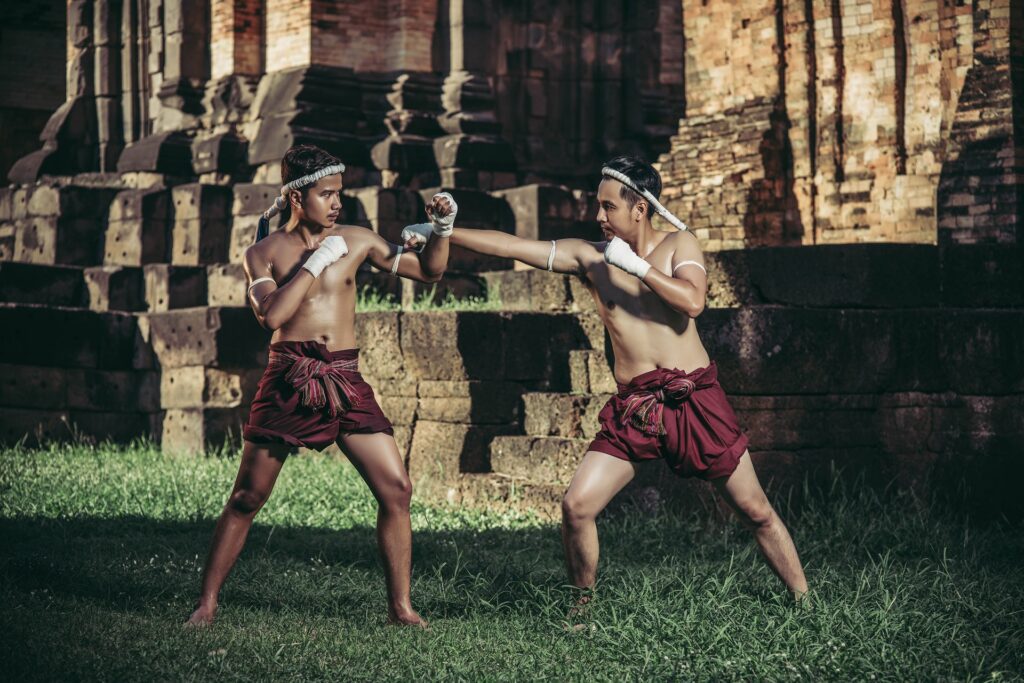
The festival is deeply rooted in Koh Samui’s local traditions, and it draws large crowds, especially among locals. In addition to the buffalo fights, there are markets, food stalls, and traditional performances that offer a complete cultural experience. While it may not appeal to everyone, it provides a unique window into the island’s agricultural heritage and long-standing community customs.
Conclusion
Attending festivals and cultural events in Koh Samui is one of the most rewarding ways to immerse yourself in the island’s rich traditions and lively community. Whether you’re splashing in the streets during Songkran, releasing a floating lantern during Loy Krathong, or dancing under the moonlight at a Full Moon Party, each celebration offers a unique glimpse into the heart of Thai culture and the island’s vibrant spirit.
Exploring these festivals allows you to form a deeper connection with the island and its people, providing an authentic experience that goes beyond the stunning beaches. Each event offers its own charm, blending ancient traditions with modern celebrations that invite everyone—locals and visitors alike—to participate and create lasting memories. Koh Samui is truly an island that embraces life in all its forms, making it a place where culture and celebration meet in perfect harmony.
FAQ
Songkran is the Thai New Year, celebrated in April, and is one of Thailand’s most exciting and energetic festivals. It’s known for massive water fights, street parties, and religious rituals. In Koh Samui, Songkran is particularly popular in tourist hubs like Chaweng and Lamai, where locals and tourists alike come together to celebrate with water battles and blessings for the year ahead.
During Loy Krathong, locals and visitors release small, beautifully decorated floats called krathongs into lakes, rivers, or the sea. This act symbolizes the letting go of past grievances and the start of a fresh chapter. In Koh Samui, Loy Krathong is often celebrated around Chaweng Lake and Bophut Beach, where the sight of floating krathongs creates a peaceful, spiritual atmosphere.
The famous Full Moon Parties are wild beach parties that take place on Koh Phangan, a neighboring island to Koh Samui. These parties are renowned for their vibrant energy, featuring music, dancing, fire shows, and thousands of partygoers celebrating under the full moon. Many visitors stay in Koh Samui and take a short boat ride to join the festivities.
Chinese New Year typically falls between January and February, depending on the lunar calendar. On Koh Samui, the festival is celebrated with colorful parades, traditional dragon dances, and fireworks, especially in areas with a large Chinese-Thai population like Nathon and Maenam. Temples are adorned with decorations, and families come together to offer prayers and celebrate with feasts.
The Samui Regatta is an annual sailing event held in May, attracting international sailors and yachting enthusiasts. The event takes place along Chaweng Beach, where spectators can enjoy the sight of colorful yachts racing across the water. The regatta is also known for its lively beach parties and social events, making it one of the island’s most celebrated sporting occasions.
The Buffalo Fighting Festival is held twice a year, in January and August. This traditional event is not as violent as it sounds; it’s more of a ceremonial competition where two water buffalos engage in a display of strength. It’s deeply rooted in local culture and is considered a symbol of prosperity. The festival also includes markets, food stalls, and celebrations, offering visitors a glimpse into Koh Samui’s agricultural traditions.
The best places to experience Loy Krathong in Koh Samui are around Chaweng Lake and Bophut Beach. These locations are popular gathering spots for locals and visitors to release their krathongs into the water, creating a beautiful, glowing scene as the floats drift away under the full moon.
Songkran in Koh Samui is a vibrant and joyful celebration, known for its massive water fights. The streets of Chaweng and Lamai are filled with locals and tourists splashing each other with water, symbolizing the cleansing of the old year and welcoming of the new. It’s an exciting, community-driven festival that blends tradition with modern fun.
While the main Full Moon Party takes place on Koh Phangan, Koh Samui hosts its own smaller-scale Full Moon Parties, particularly in the Chaweng area. These events offer a more relaxed version of the famous party, with music, dancing, and the same festive spirit without needing to travel to a different island.
Loy Krathong is a deeply spiritual festival in Thailand. By releasing krathongs—decorated floats—into the water, participants express gratitude to the water goddess and symbolically let go of past grievances. The festival represents a fresh start, inviting participants to reflect, forgive, and embrace new beginnings.
